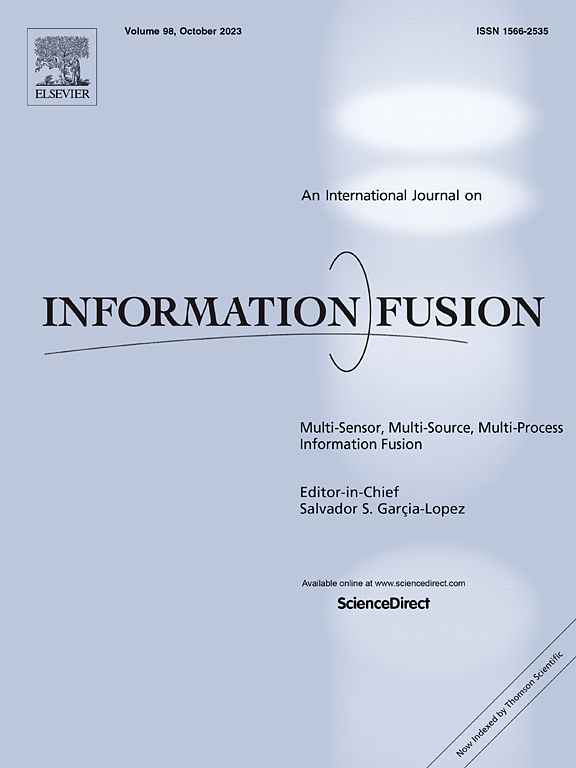Uncertainty-aware traffic accident risk prediction via multi-view hypergraph contrastive learning
IF 14.7
1区 计算机科学
Q1 COMPUTER SCIENCE, ARTIFICIAL INTELLIGENCE
引用次数: 0
Abstract
Traffic accident prediction is crucial for maintaining safety in smart cities. Accurate prediction can significantly reduce casualties and economic losses, while alleviating public concerns about urban safety. However, achieving this is challenging. First, accident data exhibits twofold imbalances: (i) a class imbalance between accident occurrence and non-occurrence, and (ii) a spatial distribution imbalance among different regions. Second, sporadic traffic accidents result in sparse supervised signals, limiting the spatial–temporal representations of conventional deep models. Lastly, the Gaussian assumption underlying the previous deterministic deep learning models is unsuitable for accident risk data characterized by dispersed and many zeros. To address these challenges, we propose an Uncertainty-aware spatial–temporal multi-view hypergraph contrastive learning framework for Traffic accident risk prediction (TarU). This framework not only jointly captures local geographical spatial–temporal and global semantic dependencies from different views, but also parameterizes the probabilistic distribution of accident risk to quantify uncertainty. Particularly, a hypergraph-enhanced network and an auxiliary contrastive learning architecture are designed to enhance self-discrimination among regions. Extensive experiments on two real-world datasets demonstrate the effectiveness of TarU. The proposed framework may also be a paradigm for addressing spatial–temporal data mining tasks with sparse labels.
基于多视角超图对比学习的不确定性感知交通事故风险预测
交通事故预测对于维护智慧城市的安全至关重要。准确的预测可以显著减少人员伤亡和经济损失,同时缓解公众对城市安全的担忧。然而,实现这一目标具有挑战性。首先,事故数据呈现出双重失衡:(1)发生事故与未发生事故之间的类别失衡;(2)不同地区之间的空间分布失衡。其次,零星的交通事故导致稀疏的监督信号,限制了传统深度模型的时空表征。最后,基于高斯假设的确定性深度学习模型不适用于具有分散和多零特征的事故风险数据。为了解决这些挑战,我们提出了一个用于交通事故风险预测(TarU)的不确定性感知时空多视图超图对比学习框架。该框架不仅从不同的角度捕获局部地理时空和全局语义依赖关系,而且还将事故风险的概率分布参数化,以量化不确定性。特别地,设计了一个超图增强网络和一个辅助的对比学习架构来增强区域间的自我区分。在两个真实数据集上的大量实验证明了该方法的有效性。所提出的框架也可以作为处理具有稀疏标签的时空数据挖掘任务的范例。
本文章由计算机程序翻译,如有差异,请以英文原文为准。
求助全文
约1分钟内获得全文
求助全文
来源期刊

Information Fusion
工程技术-计算机:理论方法
CiteScore
33.20
自引率
4.30%
发文量
161
审稿时长
7.9 months
期刊介绍:
Information Fusion serves as a central platform for showcasing advancements in multi-sensor, multi-source, multi-process information fusion, fostering collaboration among diverse disciplines driving its progress. It is the leading outlet for sharing research and development in this field, focusing on architectures, algorithms, and applications. Papers dealing with fundamental theoretical analyses as well as those demonstrating their application to real-world problems will be welcome.
 求助内容:
求助内容: 应助结果提醒方式:
应助结果提醒方式:


